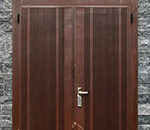
First of all it is important for you to choose images that have some darks and lights – it doesn’t matter how colorful they are. Many images could go along with sepia tone, so you won’t take forever finding an image. You can even have a black and white image. However, if you start with images that are in CMYK, there’s no need to convert them to RGB. If you’re going to use them for the web, then convert them to RGB by clicking IMAGE-MODE-RGB. Take the image size down to 72 dpi with about 4 inches in height. Do this by the commands, (IMAGE-IMAGE SIZE). If your image is for print, though, a much higher resolution is needed for it. The dpi needed can be checked with your printer.
You’ll see how big your image is by making sure you are at 100%. Whether you are using the image for the web or planning to print it, make sure that you are aware of the size you have it set at. Scale the size down or repair a choppy image by using the ZOOM TOOL-Hit Z on the keyboard – hold down your ALT key. On a Mac, open apple key to toggle back and forth between zoom in and out). You’ll see your image smoothing out as you manipulate these commands. We dearly hope that it would work for you!
When you have found the ideal size you want for your images, we go on to the fun part! Begin working on the color first for it is easier and adjust your lights and darks.
Change the Hues of your image by IMAGE-ADJUST-HUE/SATURATION. Check the box that says colorize and preview or check it by default. It’s your choice if you like to adjust the top bar to the color you want for your image, or just type in numbers. Saturation is how much of the hue you chose will be used on your image. For adjusting lightness, the lightness slider does the trick. Try not to go crazy over this last bar (lightness).
Then, adjust the darks and lights. Even if you think your image is already so great and you wouldn’t want to mess it up try this – select IMAGE-ADJUST-LEVELS. Three sliders will appear – the first will make your image lighter, another will make it darker, and the last one adjusts the midtones. Adjust on these sliders depending on the image you use. Once you’re done, hit CONTROL-Z or EDIT-UNDO MOVE to see your image before the adjustments. It will switch back to the original image. If you hit CTRL-Z or EDIT-UNDO MOVE again, it will toggle back to the image with the level adjustment you just applied. If you like to have fun, go over it again and again! Just don’t blame us if you get bored!
And we haven’t told you that you can do different types of hues? So, we’re telling you now! If you’ll be doing this types of images for the web the great thing is that you can save them as a GIF and they will look wonderful. File sizes will not be a problem since you are using lesser colors! Good luck with your sepia! -30-
For comments and inquiries about the article visit http://www.graphicdesignsunlimited.com
About the Author
Lala C. Ballatan is a 26 year-old Communication Arts graduate. Book reading has always been her greatest passion — mysteries, horrors, psycho-thrillers, historical documentaries and classics. Her writing prowess began as early as she was 10 years old in girlish diaries. With writing, she felt freedom – to express her viewpoints and assert it, to bring out all concerns — imagined and observed, to bear witness.
Like This Article?
Don't Miss The Next One!
Join over 100,000 photographers of all experience levels who receive our free photography tips and articles to stay current:






Leave a Reply